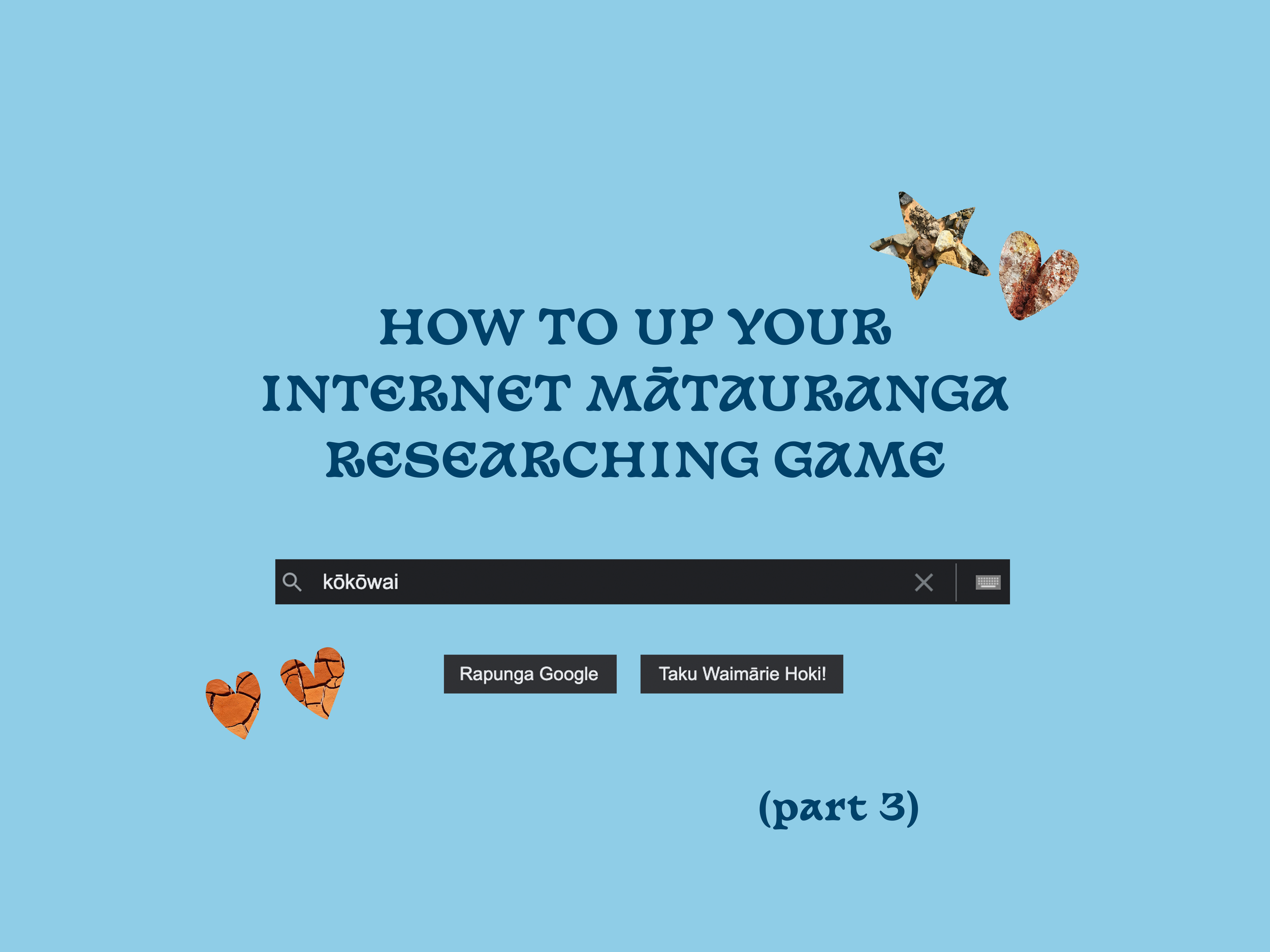
nā Kahu Kutia - April 22
In this final part, we’ll have a look at some other sources from further away! I’m having a look at the international scene for good places to find mātauranga, taonga, and wider pigment information.
Places to search:
I learned about this one at uni, but it’s a search engine specifically for articles and other academic kinds of texts, most of which are available online. Can be text and information heavy content, but can come up with gems if you have the time to sift through.
This is another quite academic site and source of scholarly articles. Specifically, the site hosts the Journal of the Polynesian Society which was founded in 1892! A lot of that earlier content is super colonial and so a warning that you’ll read some writing that is really of it’s time. But there are nuggets of information in there if you can make it through. JSTOR allows 100 free article readings a month, or you may be able to access through educational institutions.
Surprise surprise, heaps of our taonga are held in the far away lands of Britain! We hope that one day they might be able to come home, but in the meantime, you can have a look through different taonga on their website. The Oxford Museum of Natural History - is similarly a British-held collection you can search.
Because our taonga have ended up all over the world, some more taonga and kōrero to be sifted through here.
National Museum of the American Indian
We should always think about how we engage respectfully with taonga from our whanaunga overseas, but there are some beautiful examples of the use of red ochre in this collection, and some kōrero about those techniques below.

Here’s some stuff I found by searching a few of these resources! The focus here is on building wider mātauranga around pigments, and still choosing resources that are freely accessible online.
Colouring the Native Northwest Coast
Melonie Ancheta has whakapapa to the Blackfoot, Cherokee, and Nez Perce peoples as well as to Ireland. She’s a writer and educator and has done a lot of exploring in to Art and History in the Pacific North West (in so-called North America) where her whakapapa lies.
This article focused on practices from the Haida and Tlingit peoples of that North West region, and especially on the use of Blue, Green, Red and Black pigments by these peoples in their art and taonga.
The article is not too long, and has some interesting information about different kinds of binders used in pigments by our indigenous whanaunga across the moana. It also speaks of vivianite, the pigment which we would call pukepoto.
This is Melanie’s website, another cool source of mātauranga.
Revealing Blue on the Northern Northwest Coast
Another one from Melanie because I found her mahi so interesting! This one is a little longer, but focuses again on the Haida and Tlingit peoples. It’s more academic and lots of information about the science involved in her investigation process. There are some beautiful images of different taonga in the middle as well.
There’s some cool info about the history of indigenous colour practice, and the impact of colonisation on this practice. Something Ancheta notes which I really buzzed out about what that a lot of the taonga created by Haida and Tlingit peoples in the past were designed to be viewed not under the electric lighting of today, but under firelight. The shapes and colours used by their tīpuna coming alive in flickering fire. So. Cool.
I also love that this article speaks to the connection between vivianite (pukepoto for us) and bones for these peoples. Vivianite specially forms in special conditions with decaying live matter, including bones, and so this pigment is associated with the spiritual, the supernatural. It makes me reflect on our own traditional practice here, in hahunga.
Gathering Colour - Anong Migwans Beam
This is a small and sweet article in Snapline Magazine with indigenous artist Anong Migwans Beam. She offers some some really beautiful and sentimental reflections on going out on the whenua collecting pigments with her dad, and taking her own children out to find pigments now. She reflects on the way we remember and connect with different colours as children and as adults. Big warm fluffies!
This one is really cool to flick through. Ashlee Weitlauf has a background in printmaking and book conservation. It was through book conservation that she made her way in to the wonderful history of natural pigments. This resource pocket full of pansies is a kind of digital sketchbook of her experiments with pigments. It’s really visual, and not much in the way of words, and has different chapters like “Specimen pages” where she logs all the different things shes turned in to ink, and different kinds of paper as well, “colour wheels” that remind me of Hilma af Klints work, “practical colour problems” and some sweet photos of a cat in a garden. Theres also a “blog” section and a “resource” section that will be of particular interest, and are full of information.
This is one central portal for people around the world exploring pigments, paints, and dyes. I did heaps of looking through here for this article! You can read and learn about other people around the world who are looking at different pigments, dyes and materials. They also have a great section on different tikanga and safety guidelines for your work. It’s such a great
portal in to the whole world of practices and practitioners.
Thats all from this series! Hope you found it helpful. Let us know if you find anything cool in your searches!

